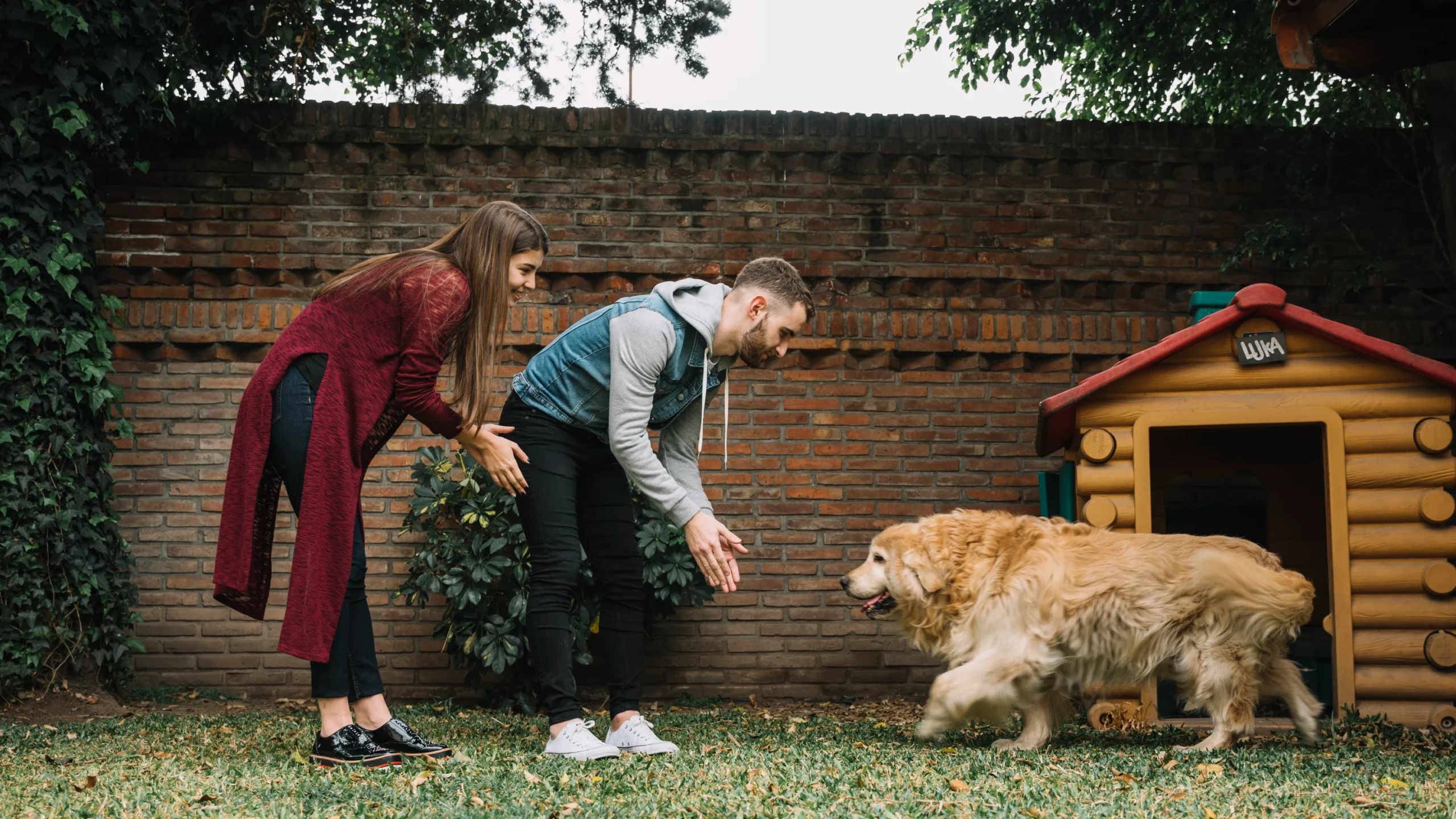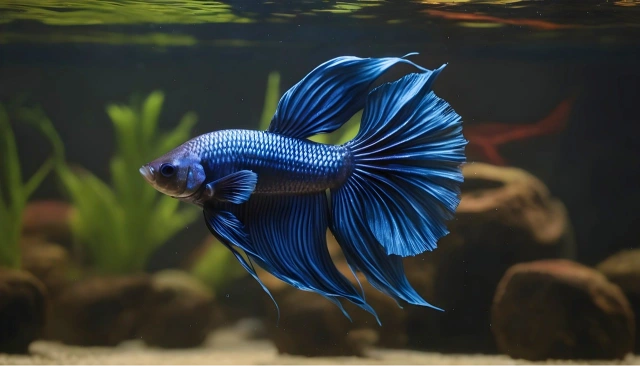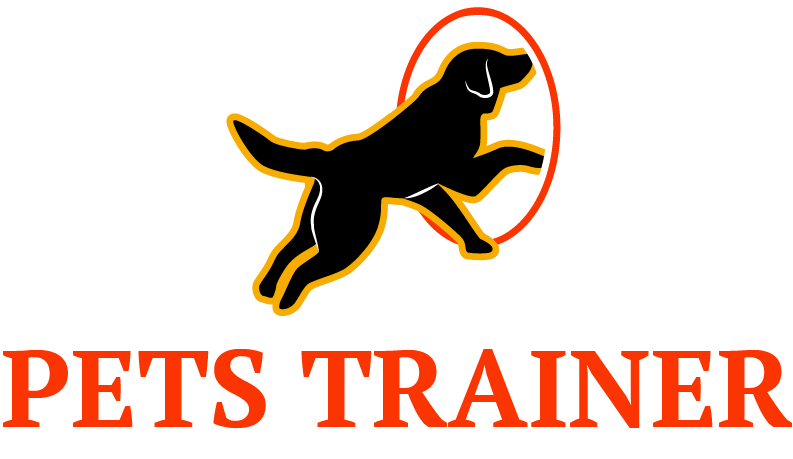Table of Contents
ToggleThe notion of teaching tricks to senior dogs might seem unconventional. Yet, it opens up a world of possibilities for deepening the bond between pet and owner while enhancing the dog’s overall well-being. From mastering new commands to refining old favorites, senior dogs display an impressive capacity for learning and adaptation.
With patience, creativity, and a sprinkle of encouragement, humans and their furry friends embark on an enriching journey that defies age-related stereotypes and celebrates the everlasting spirit of beloved canine companions. I will discuss perfect teaching tips and tricks for senior dogs in this article.
Why Teach Tricks to Senior Dogs?
Senior dogs benefit greatly from mental and physical stimulation like their younger counterparts. Having kids practice stunts has several advantages:
Mental Stimulation
Teaching tricks to senior dogs is a fun activity and provides essential mental stimulation for our aging canine companions. Older dogs need to exercise their minds to maintain cognitive function and overall well-being like humans. The relationship between an elderly dog and its owner might be strengthened by teaching it new tricks.
It offers an opportunity for positive reinforcement, building trust and enhancing communication between the two.
By investing time in teaching tricks to senior dogs, owners provide mental stimulation and promote a fulfilling and enriched quality of life for their beloved pets.
This activity presents an exciting way to keep older dogs engaged while fostering a more profound connection that benefits both dog and owner alike.
Physical Exercise
Teaching tricks to senior dogs can be incredibly beneficial, especially regarding physical exercise. Many schemes involve movement, which helps seniors stay mobile and maintain their physical health. Engaging in tricks like rolling over, weaving through poles, or balancing can provide low-impact exercise that keeps their joints supple and muscles toned.
Engaging in physical exercise enhances their general health and raises their standard of living as they age.
By introducing new commands and challenges through trick training, you can help keep their minds sharp and attentive. This mental engagement is crucial for maintaining cognitive function and preventing the onset of senility or other age-related mental issues in senior dogs.
Bonding Opportunity
Engaging in training sessions with older dogs can be an incredibly fulfilling and valuable experience for both the dog and the owner. It presents a unique chance to fortify their emotional ties, fostering a closer relationship based on positive reinforcement and trust.
Engaging in training activities with senior dogs also allows owners to understand their pet’s needs and capabilities better in this stage of life. It provides an avenue for communication and interaction beyond primary care, enriching the relationship between owner and dog in meaningful ways.
Ultimately, teaching tricks to senior dogs is more than just a fun pastime; it’s an opportunity to deepen the bond through shared experiences and mutual growth.
Boosting Confidence
Teaching tricks to senior dogs is not just about keeping them entertained; it’s also a powerful way to boost their confidence. As dogs age, they may experience a decline in physical and cognitive abilities, which can affect their self-esteem.
Introducing new tricks and skills can provide mental stimulation and a sense of achievement for your senior dog. Mastering these new tasks helps them feel capable, ultimately bolstering their confidence.
Tips for Training Senior Dogs
Patience is Key
Teaching tricks to a senior dog requires a deep well of patience. As dogs age, they may experience age-related changes that can affect their ability to learn new things. It’s essential to be understanding and patient with them during the training process.
Remember, like humans, senior dogs may take longer to grasp new concepts or commands. You and your pet will only become frustrated if you rush or put too much pressure on them.
Understanding your senior dog’s limitations and adapting your training methods is crucial for success. Remember that elderly dogs might be unable to execute some acts due to physical restrictions or need longer pauses throughout training.
Adjusting your expectations and being patient as your senior dog learns at their own pace will help create a positive and rewarding training experience for both of you.
Remember, every small victory is worthy of celebration, as it represents the effort and progress made by your faithful companion.
Positive Reinforcement
Senior dogs can learn tricks successfully when positive reinforcement is used, as it emphasizes rewarding desired behavior instead of punishing bad behavior. You can encourage your old dog to learn new tricks with enthusiasm and joy by using treats, verbal praise, and affection as rewards.
Another perspective worth considering is the power of consistency in positive reinforcement training. Establishing clear communication and being consistent with rewards, boundaries, and expectations can create a supportive environment where your senior dog feels encouraged to continue learning and growing.
Ultimately, approaching the training process with empathy and focusing on building trust can lead to fulfilling experiences for you and your beloved senior companion.
Keep Sessions Short and Simple
Training senior dogs can be a rewarding experience with the right approach. When teaching tricks to older canine companions, it’s essential to remember that their physical stamina may not be what it used to be. Keeping training sessions short and straightforward is best to ensure effective learning and engagement.
Choose Appropriate Tricks
When teaching tricks to senior dogs, choosing appropriate activities that consider the dog’s physical condition is essential. While it may be tempting to try flashy and impressive stunts, it is crucial to prioritize the health and well-being of your older canine companion. Strenuous movements or high-impact activities should be avoided, as they can unnecessarily strain aging joints and muscles.
Remember that every senior dog is unique, so observe your furry friend closely during training sessions and adjust the difficulty level accordingly. It is all about balancing mental stimulation and physical comfort, ensuring your older dog can learn new tricks safely and enjoyably.
6 Tricks Perfect for Senior Dogs
Basic Obedience
As your furry companions age, it’s important to continue stimulating their minds and bodies. Teaching tricks to senior dogs is a beautiful way to keep them mentally sharp and engaged.
For old dogs, simple obedience commands like sit, remain, and lie down are helpful and a terrific cerebral challenge. These exercises help maintain their cognitive function and improve their overall quality of life.
In addition to traditional obedience commands, consider incorporating fun tricks like high five or roll over into your training routine. These activities not only exercise your dog’s mind but also allow them to showcase their personality and abilities.
Paw Shake
Teaching tricks to senior dogs can be a rewarding experience for you and your furry companion. One simple yet adorable trick perfect for old dogs is the paw shake.
It is a gentle, low-impact way to engage your senior dog’s mind and body, keeping them mentally sharp and physically active. This trick strengthens the bond between you and your pet, creating a heartwarming connection that transcends age.
Spin or Turn Around
The spin or turn around command is a great way to keep your aging pup’s mind sharp and their body active. It’s important to remember that teaching this trick may take some patience, as older dogs may pick it up slower than younger ones. But with consistent practice, you’ll likely see progress over time.
One benefit of teaching your senior dog the spin trick is the mental stimulation it provides. Engaging in training activities can help prevent cognitive decline in older dogs and keep their brains active. Also, mastering this trick can improve your dog’s coordination and balance, essential for maintaining their physical well-being as they age.
High Five
Transitioning from a standard handshake to a high five can add fun and excitement to your senior dog’s training routine. This simple trick allows you to further bond with your furry companion while keeping their mind active and engaged. You can easily teach new tricks like the high five by adapting training techniques for older dogs, such as gentle, positive reinforcement methods.
Senior pets may require more patience and understanding when learning new tricks, but the process can be incredibly rewarding for you and your dog. Incorporating easy tricks like the high five into their routine provides mental stimulation and boosts their confidence and overall well-being.
Fetch Light Objects
Engaging senior dogs in light object fetch is a beautiful way to stimulate them mentally and physically. While they may not have the same stamina as when they were younger, their enthusiasm for play remains intact. Soft toys or lightweight balls ensure your furry friends can participate without straining themselves. This activity offers a gentle exercise that provides mental stimulation, making it an ideal trick for mature dogs.
Find the Treat
Teaching tricks to senior dogs can be a delightful way to keep them mentally stimulated and physically active. Find the Treat is an engaging game that taps into a dog’s instinct to search and use their keen sense of smell.
By hiding treats around the house, you provide your senior dog with an opportunity for a fulfilling mental challenge, promoting cognitive function in a fun and interactive manner.
Moreover, this game can strengthen your bond with your furry companion as they eagerly sniff out the hidden treasures. It also serves as an excellent form of low-impact exercise for senior dogs, keeping them agile and maintaining their mobility. As they meander through different corners of the house in pursuit of treats, their senses are heightened, giving them a renewed sense of purpose and enjoyment.
Conclusion
In conclusion, teaching tricks to senior dogs can be a rewarding experience for the dog and the owner. It provides mental stimulation, boosts confidence, and strengthens the bond between the pet and its human companions.
While it may take more patience and understanding, the benefits of engaging in training activities with senior dogs are well worth the effort. Older dogs can pick up new tasks and experience the satisfaction of being able to do them if they are taught consistently, given positive rewards, and handled gently.
FAQs
Q: Can senior dogs still learn new tricks?
A: Senior dogs can learn new tricks with patience and positive reinforcement.
Q: What are some common challenges when teaching tricks to senior dogs?
A: Common challenges include physical limitations, decreased energy levels, and potential hearing or vision impairments.
Q: How do I motivate my senior dog to learn new tricks?
A: Use high-value treats, keep training sessions short, and make the learning process fun and rewarding for your senior dog.
Q: Are specific tricks more straightforward for senior dogs to learn?
A: Tricks that involve gentle movements, such as paw shaking or spinning, may be easier for senior dogs to learn than more physically demanding tricks.
Q: Is it safe to teach agility tricks to senior dogs?
A: It’s essential to consult with a veterinarian before introducing agility training to ensure it’s safe for your senior dog’s health and mobility.
Q: How often should I train my senior dog to learn new tricks?
A: Short, frequent training sessions a few times a week are ideal for teaching tricks to senior dogs without overwhelming them.

Dr. Usman Bajwa, a dedicated veterinarian with a passion for pets, brings years of expertise to the world of pet grooming. Through his blog, he shares valuable insights and practical tips to help pet owners provide the best care for their furry companions. With a focus on promoting the health and happiness of pets, Dr. Usman articles offer easy-to-follow guidance on grooming techniques. When he’s not writing, you can find him at his clinic or enjoying time with his own beloved pets.




